Top Photo: Muscadine grapes ripening on the vine.
Muscadine grapes are native to the southeast and are a common and welcomed plant here at the museum. Many birds and mammals including cardinals, robins, and turkeys, groundhogs, gray fox, and humans eat the fruit. There are many vines throughout the museum grounds. If you can reach the grapes as they grow on the vine, it’s worth it to grab a few for yourself before they’re all gone.
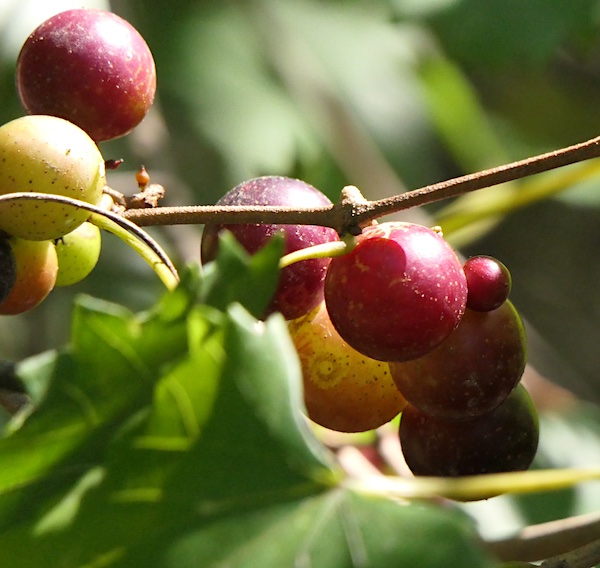
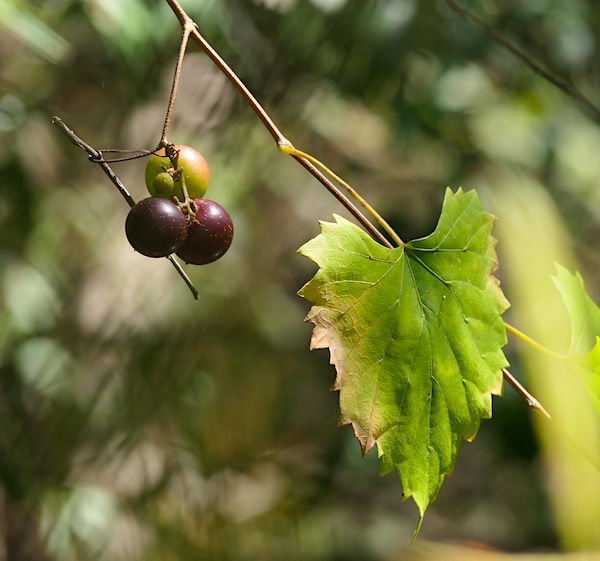
Cardinal flower is blooming along the Floating Walkway in Explore the Wild. It likes to keep its feet wet. You won’t find it far from water. Its scarlet flowers attract hummingbirds.
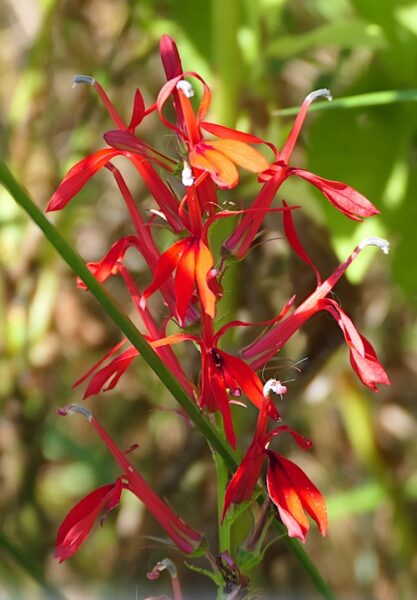
Green anoles are about an inch long, from the tip of their nose to the vent (cloaca), when they hatch. The one pictured here is not much larger as it searches about a butterfly bush for insects to eat.
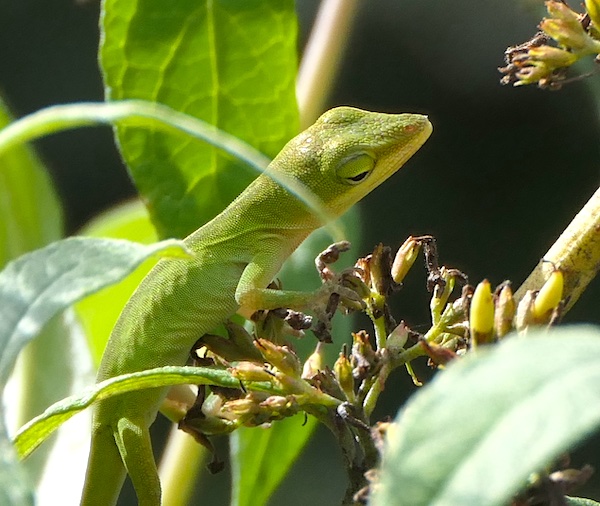
Another green herpetological resident at the museum, this time an amphibian instead of a reptile, is the green treefrog. The one pictured here was likewise perched and looking for local insects to eat. This one too, is a young member of its species. It’s on the vegetation next to the Floating Walkway in Explore the Wild.

Up on dry land, redbud has numerous seed pods ready to volunteer. It’s a small tree or large shrub and is native from Canada to Florida and west, well into Texas. It’s a legume.
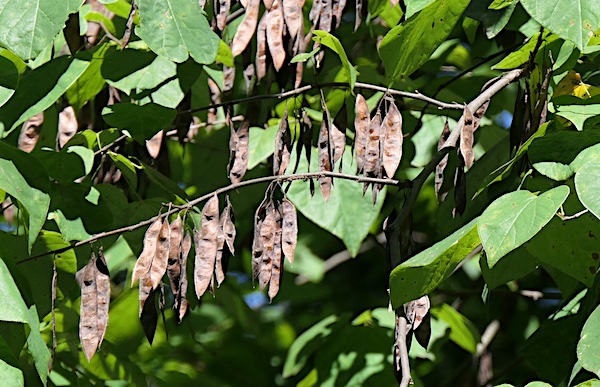
Getting ready to feed the soon to arrive migrating yellow-rumped warblers (myrtle warblers or butter-butts) wax myrtle fruit is ripening. Butter-butts are mostly insectivorous birds that are able to switch over to fruit during winter when they migrate south. They are one of the most northerly of the warbler species during winter because of their ability to switch from insects to fruit when fewer insects are available. They feed heavily on wax myrtle fruit in the insect-lean months.
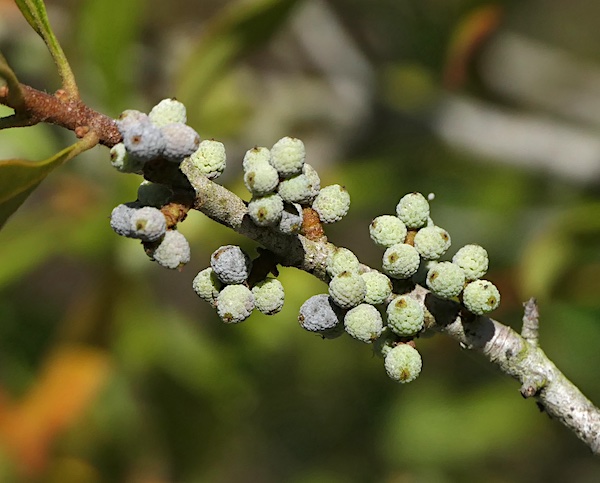
Hearts-a-bursting, or strawberry bush (Euonymus), is in seed mode. This unassuming understory shrub is common but often overlooked.

A rather common medium sized and colorful butterfly, the American lady, can often be seen nectaring on flowers in domestic gardens.
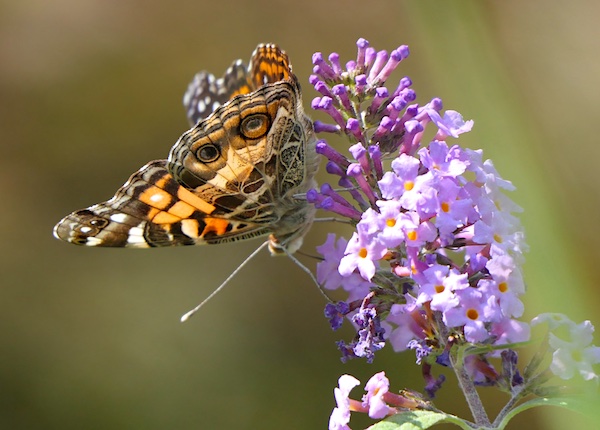
There is a lookalike relative to this more common species. If you see a white dot in the orange rectangle on the forewing and the two large eyespots on the hindwing, you’ll be looking at American lady (the less common lookalike is painted lady – no white spot and 4 or 5 small, instead of two large, eyespots on hindwing).
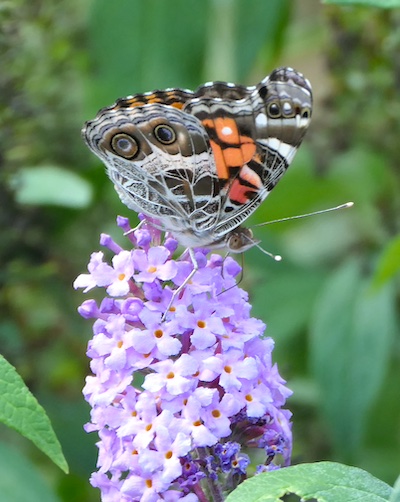
Marching across the path through the Dinosaur Trail, a luna moth caterpillar inches its way along. It’s heading out to find a safe place to pupate in the leaf litter presumably below its host tree which may include birch, black gum, hickory, pecan, persimmon, sweetgum, walnut and other trees. Typically bright green, the large silk moth larva may turn red-brown, like the one pictured here, just before pupation.
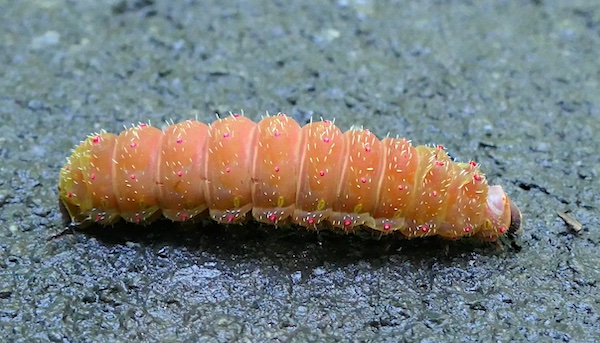
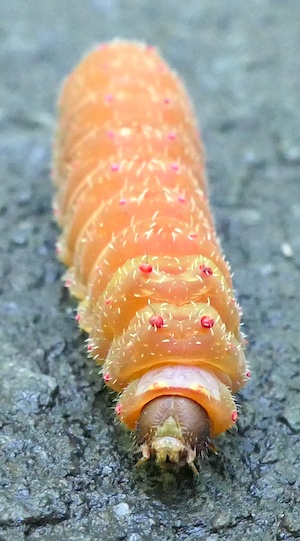
It’s time to get out and take a hike. Let me know what you see out there!
Ranger Greg